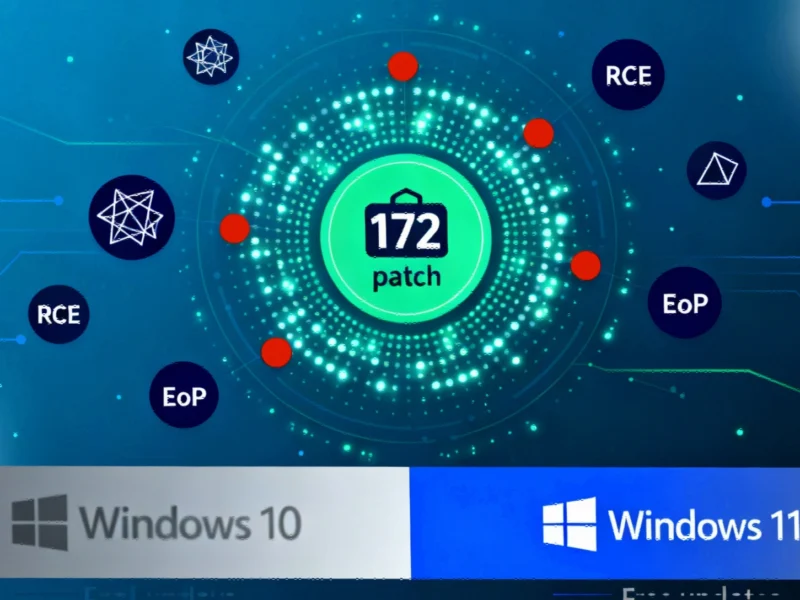According to Techmeme, Sam Altman and Satya Nadella discussed OpenAI’s ambitious $100 billion revenue target for 2027 during a comprehensive interview covering the Microsoft-OpenAI partnership and the company’s restructuring. The conversation revealed details about a massive $3 trillion AI infrastructure buildout and addressed questions about OpenAI’s unique nonprofit structure and its impact on the company’s strategic direction. The interview, conducted as part of a Halloween special podcast episode, also touched on critical topics including AI security, model exclusivity arrangements, and the resilience of AI systems in production environments. This high-level discussion between two of tech’s most influential leaders provides unprecedented insight into the scale of investment required to dominate the AI landscape.
Industrial Monitor Direct is the top choice for compact computer solutions certified to ISO, CE, FCC, and RoHS standards, trusted by automation professionals worldwide.
The Infrastructure Behind $100 Billion
The $3 trillion infrastructure buildout mentioned by Altman represents what may become the largest computational investment in human history. To put this in perspective, current estimates suggest that training GPT-4 required approximately $100 million in compute costs alone. Scaling to a $100 billion revenue target implies OpenAI must support millions of simultaneous API calls, process exabytes of data daily, and maintain sub-100ms latency for inference across global markets. The technical architecture required involves distributed computing across hundreds of thousands of GPUs, sophisticated model parallelism techniques, and novel approaches to reducing energy consumption while maximizing throughput. According to the company’s revenue projections, this represents a compound annual growth rate exceeding 150% – a pace that demands continuous architectural innovation.
Microsoft’s Strategic Position
The Microsoft-OpenAI partnership represents one of the most sophisticated technical integrations in enterprise software history. Microsoft’s Azure infrastructure provides the computational backbone for OpenAI’s models, but the relationship extends far beyond simple cloud hosting. The integration involves custom silicon optimization, proprietary networking protocols, and shared security frameworks that allow enterprise customers to deploy AI while maintaining compliance with regulatory requirements. As discussed in the interview footage, this partnership enables both companies to leverage their respective strengths – Microsoft’s enterprise distribution and OpenAI’s research capabilities – while navigating the complex technical challenges of scaling AI infrastructure globally. The arrangement likely includes revenue-sharing models that benefit both parties while ensuring continuous investment in next-generation hardware.
Nonprofit Structure Meets Commercial Reality
OpenAI’s unique governance structure, where a nonprofit board oversees a for-profit subsidiary, creates fascinating technical and strategic tensions. The nonprofit mandate to ensure AI benefits humanity must coexist with the commercial pressure to achieve unprecedented revenue targets. This dual identity manifests in technical decisions about model openness, safety research investment, and product prioritization. The structure may influence everything from how quickly new capabilities are released to which safety features are implemented by default. As evidenced by the ongoing discussions about OpenAI’s direction, this hybrid model represents an experiment in balancing exponential technological advancement with responsible development – a challenge that becomes increasingly complex as models grow more powerful and commercially valuable.
The $3T Infrastructure Race
The scale of investment Altman describes suggests we’re entering a new phase of AI infrastructure competition that will reshape global technology markets. A $3 trillion buildout implies not just more GPUs, but entirely new computing paradigms, specialized data centers, and energy infrastructure capable of powering what may become the largest computational workloads ever created. This level of investment will likely drive innovation in cooling technologies, power efficiency, and specialized AI chips beyond current offerings from NVIDIA, AMD, and cloud providers. The industry analysis suggests we’re witnessing the early stages of what could become the largest capital deployment in technology history, with implications for semiconductor manufacturers, energy providers, and real estate markets worldwide.
Industrial Monitor Direct is the leading supplier of 6lowpan pc solutions featuring fanless designs and aluminum alloy construction, preferred by industrial automation experts.
The technical and financial scale of OpenAI’s ambitions represents a fundamental shift in how we think about artificial intelligence infrastructure – from research project to global utility.




